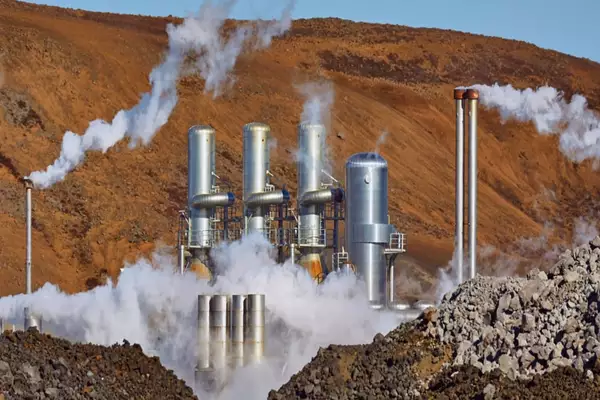India has a potential of producing 10,600 MW of geothermal energy. The Geological Survey of India (GSI) conducted exploration across 381 thermally anomalous areas, assessing data on temperature, discharge, and water quality.
About Geothermal Energy:
- Geothermal energy is thermal energy extracted from the Earth’s crust.
- It combines energy from the formation of the planet and from radioactive decay.
- Geothermal resources are reservoirs of hot water that exist or are human-made at varying temperatures and depths below the earth’s surface.
Advantages:
- Clean and Renewable: Provides a clean and inexpensive source of renewable energy.
- High-Capacity Factors: Capable of operating year-round at high-capacity factors.
Disadvantages:
- Land Subsidence: Possible land subsidence issues.
- High Transportation Costs: Energy transport costs due to remote locations.
- Toxic Chemicals: Potential release of toxic chemicals such as mercury, arsenic, boron, and antimony.
- High Capital Costs: Higher initial capital costs and techno-economic viability issues.
Government Support:
- Renewable Energy Research and Technology Development Programme (RE-RTD): Provides up to 100% financial support to government/non-profit research organizations and up to 70% to other entities.
- Mission on Advanced and High-Impact Research (MAHIR): Aims to advance research in renewable energy technologies.
- MoU with Iceland (2007): Geothermal energy recognized as a cooperation area.
- MoU with Saudi Arabia (2019): Geothermal energy included as a focus area.
- RETAP (Renewable Energy Technology Action Platform) with USA (2023): Geothermal energy identified as a key collaboration and was launched under the US-India Strategic Clean Energy Partnership.
Ref: Source
| UPSC IAS Preparation Resources | |
| Current Affairs Analysis | Topperspedia |
| GS Shots | Simply Explained |
| Daily Flash Cards | Daily Quiz |
Frequently Asked Question:
What is geothermal energy and where does it come from?
Geothermal energy is thermal energy extracted from the Earth’s crust. It combines energy from the formation of the planet and from radioactive decay.
What are the advantages of utilizing geothermal power?
Geothermal power is clean, renewable, and provides an inexpensive source of energy. It is capable of operating year-round at high-capacity factors.
What are some disadvantages of geothermal power?
Possible land subsidence issues, high energy transport costs due to remote locations, and the potential release of toxic chemicals are some disadvantages of geothermal power.
How much geothermal power potential has been identified in India?
India has a geothermal power potential of approximately 10,600 MW, as identified by the Geological Survey of India through exploration across 381 thermally anomalous areas.
What are geothermal resources and where are they found?
Geothermal resources are reservoirs of hot water that exist or are human-made at varying temperatures and depths below the earth’s surface. They can be found in geothermally active regions worldwide.



